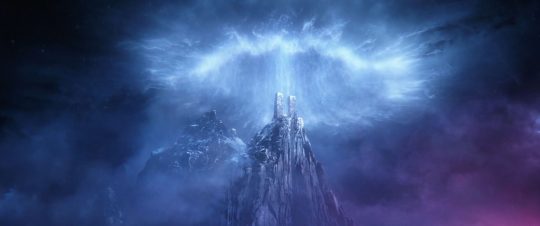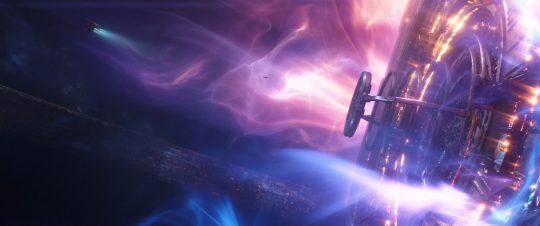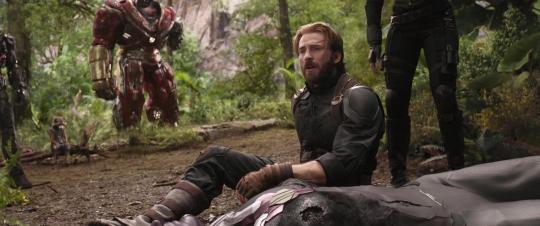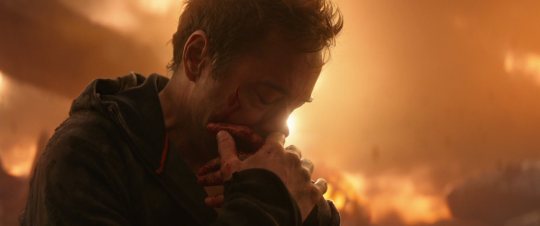#its hard to separate the depression hopelessness and the general hopelessness of living in america...
Explore tagged Tumblr posts
Text
genuinely in awe with how half of this country is still rooting for trump after all this. do they have no critical thinking skills? are their heads so far up their own asses they can't possibly see a way out? its not even going to matter if the jury finds him guilty or not in any of the multiple felony trials hes found himself in, his loyal fanbase of total fucking morons is still going to vote for him even if he ends up in jail, which he probably won't, he'll find another way to weasel his way out of that too no doubt. it's so depressing. american politics are so fucked. the republican party should be reclassified as terrorists with the amount of hate crimes they're passing as laws. the 1st amendment doesn't even fucking matter anymore, theocrats have taken over pretty much the entire government and continue to make everyone's lives absolutely miserable. what's the fucking point? even if you get a democrat elected theyre either too scared to do anything that won't get then reelected or the republicans in the senate or whatever just shut down their bills. what is going to fix america at this point when half of it is dragging us back into the dark ages and the other half is too worried about their poll numbers to do anything about it? its so hard to be hopeful for the future when everyone's rights are being taken away...
#personal#sorry im just going thru it rn#its hard to separate the depression hopelessness and the general hopelessness of living in america...#everything fucking sucks for everyone except if youre rich#dont get me wrong. having a republican in office is infinitely worse . thats how we got the insanely stacked supreme court#and lost abortion rights etc. but it just seems like. have you heard of the ratchet effect?#whenever a republican is in office the gear shifts to the right. but when the democrat is in the gear tries to go left#but is stuck in place to where the republican turned it. so it's at least not turning right. but it's not getting better!!!#i don't want shit to simply Not Get Worse. i want them to get better!!!!!!#the fucking scraps we get from biden are nothing. i want something as good that equals the amount of bas#*bad the trump did. or ideally more good#but democrats are fucking spineless cowards and all politicians care about is getting reelected so we're all fucked!!
0 notes
Text
Marvel Cinematic Universe: Avengers: Infinity War (2018)

Does it pass the Bechdel Test?
Yes, once.
How many female characters (with names and lines) are there?
Nine (25.71% of cast).
How many male characters (with names and lines) are there?
Twenty-six.
Positive Content Rating:
Three.
General Film Quality:
For a movie which is pretty much wall-to-wall fight scenes...I love it. I always start out going ‘maybe I overrate this movie, maybe it’s not as good as I remember’, but by the end, I’m right back in there.
MORE INFO (and potential spoilers) UNDER THE CUT:
Passing the Bechdel:
Wanda apologises to Natasha for lying. It’s a close call.

Female characters:
Pepper Potts.
F.R.I.D.A.Y
Gamora.
Mantis.
Wanda Maximoff.
Natasha Romanoff.
Okoye.
Nebula.
Shuri.
Male characters:
Ebony Maw.
Thanos.
Thor.
Loki.
Heimdall.
Bruce Banner.
Stephen Strange.
Wong.
Tony Stark.
Peter Parker.
Ned.
Peter Quill.
Rocket.
Drax.
Groot.
Vision.
Steve Rogers.
Sam Wilson.
The Collector.
Thaddeus Ross.
James Rhodes.
T’Challa.
Bucky Barnes.
Eitri.
Red Skull.
M’Baku.
OTHER NOTES:
Heimdall had proven himself too much of an MVP in previous films to be allowed to live in this one. Bastards.

Heimdall and Loki, both dead before the opening titles. That’s how you know this movie means business, it’s not faking at high stakes.
I also am from space and have come here to steal a necklace from a wizard.
“Mr Stark, it smells like a new car in here!”

“All words are made up.”
Not gonna lie, when I saw this at the cinema and I realised that Captain America had arrived? My heart LEAPT. It was intense.

Depressed Thor is a great touch - after all previous films with Thor had him so bland, and then Ragnarok made him funny but essentially glossed over any of the difficult emotions it was dredging up, I’m glad to finally get something real and meaty from the character. If characters go through all manner of Hell and don’t show any signs of labouring under that weight, you’re doing character development wrong.
Nice callback with Red Skull.
The sacrifice of Gamora on Vormir is a really well-balanced piece; it was asking a lot, to make the emotion of it land despite how little of Thanos we’ve seen before, and without genuine emotion at it’s core it’s just the killing off of a female character for shock value. I feel like they got the pitch just right (most thanks to the music).
As much as I enjoy Thor and Rocket’s bantering, the side-quest for Stormbreaker feels like an unnecessary and over-the-top distraction in an already stuffed-full film. Easily the weakest part of the plot.

The fact that Quill fucks everything up with defeating Thanos on Titan because he can’t keep himself under control for two seconds certainly does not endear him to me in the slightest. Like ok, you’re upset, but if you can’t stop yourself from getting violent that’s on you, that makes you a dangerous person with serious issues, that’s not normal and it’s not ok. Also, literally half of all life in the universe was at stake. So there’s that.
Listen, I’m very susceptible to heroism (and that’s why superhero movies work for me), so every time someone comes to someone else’s rescue, I have feelings.
I had convinced myself that somehow, Thanos wouldn’t succeed with his whole plan in this movie, that he would get all the stones but that he would like, go to a special place or something before enacting his plan, so that the good guys would have a chance to regroup and race to stop him before it was too late, all that jazz. So (even though Thanos had already snapped at that point), when Bucky Barnes disintegrated before our very eyes, I was SHOCKED. That got me like a smack in the face.

Considering I’ve never really been a fan of Tom Holland’s Spider-man, it’s a credit to his work that Peter’s death scene is so effective. That’s acting.

So, what makes this movie work despite being so heavy with bombastic action? The short answer is: it’s because the good guys lose. I’ve made no secret of being a fan of the ‘hour darkest before the dawn’ in storytelling, so this is playing to the sweet spot for me there, but it’s not as simple as just making everything miserable and hopeless. In this case, specifically, the lead-up to that ultimate failure is key; it’s gotta still feel like a superhero extravaganza, even as it takes an increasingly dark turn. The action works because it’s part of what we signed up for (the best camouflage for subversions of the traditional model), and it works because it’s all carrying the story forward - the Infinity War is comprised of multiple battles, and because of the way the pieces of the narrative are separated, the characters don’t know how any of the other battles are turning out; everyone is just trying to fight what’s in front of them and defend the stone in their midst, they don’t have the option to sit around doom-and-glooming and restrategising as news of each defeat comes in. Rather than dragging us wholesale from Point A to B to C in ever-escalating stakes and complications, the writers have had the good sense to spread things out and let things fall apart for our heroes (and the universe) in multiple smaller pieces until they reach a cumulative critical mass. Consequently, instead of feeling as though we’re sitting there watching things go from bad to worse, the audience forms this false sense of security in the action; it’s a superhero movie, after all. We expect them to work it all out in the end, to build toward a moment of apparent hopelessness (a darkest hour before the dawn), and then to rally triumphantly for the big win. As such, we perceive small victories (i.e. the defeat of Thanos’ various ‘children’, the creation of Stormbreaker, the way things draw out in the battle on Titan) as if they are more significant, as if they are signs leading us to that big win; without those small, expected victories, the ultimate failure would not hit as hard, because after two and a half hours of watching the good guys get wrecked without a chance, what surprise would there be in the snap?

Of course, plenty of viewers knew about the snap already or expected an ultimate failure of some sort based on the fact that we pretty much all knew that this was the first half of our grand Avengers finale (my mother, who is not a superhero movie fan, did not know what she was getting into and was...very shocked), so it’s important that the film still works to engage us on a character level so that the good guys losing in the end can hit like a ton of bricks even if you knew it was coming (and even though you no doubt expected to get the big win eventually, once Endgame came out). After all the fighting and the bantering, all the usual stuff we expect to see our heroes go through in the course of an average adventure, having them then watch their beloved friends/allies/whatever literally disintegrate before their eyes in a quiet, drawn out scene of devastation is a magnificent piece of cinema, communicating the shock not only of the event itself, but of the complete disruption to the superhero status quo. It’s not just that good guys don’t lose like this, it’s that they don’t lose with a whimper instead of a a bang. It’s not only that the cost of failure has never been this high; it’s also that they have never been forced to watch it play out with such inevitability; they have never before been rendered so powerless. If the entire film had the tone of the last ten minutes, it wouldn’t work so well, it’d just be a drudge and the audience would be desensitised by the end. By the same token, if the rest of the film had not planted the seeds of the finale so thoroughly in all its smaller losses and smokescreen victories, the ending would not be so horrifically fitting.

Neither, of course, would the ending be so affecting, if we were not as attached to the characters as we are. We have many, many films worth of history with most of them, or at least one solid encounter in which to become attached, and even in a movie chock-full of more characters than any other before, everyone gets a chance to show their personality and remind us why we care if they live or die. I’m not going to argue for this being an incredible character piece (nor is it pretending to be one), but it plays its very large hand very well, putting emphasis where it needs to be without overloading or unbalancing the story. As I noted above, I was particularly impressed with the way Thanos was handled, considering our exposure to him previously was very minimal and it was left up the this film to build his ethos as well as his relationships with his ‘children’ almost from scratch, creating complexity and simplicity without falling into the trap of trying to make the villain sympathetic; Thanos isn’t necessarily relatable (nor does he need to be), but he is understandable in that we’ve all probably encountered at least one person who holds the same limited worldview and is somehow convinced that they could ‘fix’ everything, given the power. Thanos isn’t actually aiming for universal domination in the traditional sense, and it makes him more disturbing and more realistic as a villain, because his evil is not nebulous or purely self-serving; he is a true believer, and his delusions have an all-too-familiar ring about them, so as we watch him lumber and pontificate around the story, we get a clearly-drawn image of someone possessed of such basic and humble flaws that he is - again, without being treated as sympathetic - quite significantly humanised, despite all of the non-human elements that make up both his character, and his situation. Even as it planet-hops and draws upon cosmic magic, the narrative is grounded by a centrepiece of plain, ungodly fallibility.

Now, I recognise that in all of this praise for the way this film was executed, there isn't really anything to be said for it regarding the purpose of this blog; on the female representation front, it's not really doing anything (the fact that it juuust manages to pass the Bechdel and juuust over a quarter of its cast is female does not win it brownie points; its better than not having either of those things, but that's not a genuine achievement). The two female characters who were more prominently positioned in this movie are Gamora and Wanda; Gamora largely in context of her relationship with Thanos, and Wanda as Vision’s significant other and the means of his destruction. Notably, both women’s arcs are accessories to the arcs of male characters, which is not what we’re aiming for in good representation, though it does not exclude the possibility of quality content; Gamora’s role may have a lot to do with Thanos (not least, after he kills her), but it is still distinctly her own story, rich with emotion and coming to a surprising and depressing end which I felt struck the right chords to be compelling rather than an enraging disposal of one of the few female characters around (more on this after Endgame). Wanda’s presence leaves less of an impression, in terms of screen time, plot complication, and audience engagement, but all things considered I don’t think that was a terrible choice; Wanda and Vision’s relationship had been a somewhat sparse subplot in previous films and the chemistry was not strong, so I don’t think it would have been to the film’s benefit to try and expand on that relationship further than they did. As it was, there was enough there to sell the emotion, and nothing extraneous, and as much as I enjoy this movie, I wish I could say better things for its female representation than that. It is stuffed-full, and definitely not perfect, and space could have been made to pump up some of the other female characters’ roles more (the Earthbound characters get the least attention in the movie, and since basically all my faves are there it is a testament to how well this movie works for me that I enjoy it so much anyway, but a little more attention there would not have gone astray, especially since that’s where most of the female cast is). That said...I still really enjoy it, man. As far as popcorn action goes, this is top shelf.

4 notes
·
View notes
Link
Article from The Atlantic “This Is Not a Normal Mental Health Disaster” (posted July 7th, 2020). Excerpt:
In any case, the full extent of the fallout will not come into focus for some time. Psychological disorders can be slow to develop, and as a result, the Textbook of Disaster Psychiatry, which Morganstein helped write, warns that demand for mental-health care may spike even as a pandemic subsides. “If history is any indicator,” Morganstein says of COVID-19, “we should expect a significant tail of mental-health effects, and those could be extraordinary.” Taylor worries that the virus will cause significant upticks in obsessive-compulsive disorder, agoraphobia, and germaphobia, not to mention possible neuropsychiatric effects, such as chronic fatigue syndrome.
The coronavirus may also change the way we think about mental health more broadly. Perhaps, Schoch-Spana says, the prevalence of pandemic-related psychological conditions will have a destigmatizing effect. Or perhaps it will further ingrain that stigma: We’re all suffering, so can’t we all just get over it? Perhaps the current crisis will prompt a rethinking of the American mental-health-care system. Or perhaps it will simply decimate it.
Shared in entirety under the cut for those who can’t access it:
This Is Not a Normal Mental Health Disaster by Jacob Stern
If SARS is any lesson, the psychological effects of the novel coronavirus will long outlast the pandemic itself.
The SARS pandemic tore through Hong Kong like a summer thunderstorm. It arrived abruptly, hit hard, and then was gone. Just three months separated the first infection, in March 2003, from the last, in June.
But the suffering did not end when the case count hit zero. Over the next four years, scientists at the Chinese University of Hong Kong discovered something worrisome. More than 40 percent of SARS survivors had an active psychiatric illness, most commonly PTSD or depression. Some felt frequent psychosomatic pain. Others were obsessive-compulsive. The findings, the researchers said, were “alarming.”
The novel coronavirus’s devastating hopscotch across the United States has long surpassed the three-month mark, and by all indications, it will not end anytime soon. If SARS is any lesson, the secondary health effects will long outlast the pandemic itself.
Already, a third of Americans are feeling severe anxiety, according to Census Bureau data, and nearly a quarter show signs of depression. A recent poll by the Kaiser Family Foundation found that the pandemic had negatively affected the mental health of 56 percent of adults. In April, texts to a federal emergency mental-health line were up 1,000 percent from the year before. The situation is particularly dire for certain vulnerable groups—health-care workers, COVID-19 patients with severe cases, people who have lost loved ones—who face a significant risk of post-traumatic stress disorder. In overburdened intensive-care units, delirious patients are seeing chilling hallucinations. At least two overwhelmed emergency medical workers have taken their own life.
To some extent, this was to be expected. Depression, anxiety, PTSD, substance abuse, child abuse, and domestic violence almost always surge after natural disasters. And the coronavirus is every bit as much a disaster as any wildfire or flood. But it is also something unlike any wildfire or flood. “The sorts of mental-health challenges associated with COVID-19 are not necessarily the same as, say, generic stress management or the interventions from wildfires,” says Steven Taylor, a psychiatrist at the University of British Columbia and the author of The Psychology of Pandemics (published, fortuitously, in October 2019). “It’s very different in important ways.”
Most people are resilient after disasters, and only a small percentage develop chronic conditions. But in a nation of 328 million, small percentages become large numbers when translated into absolute terms. And in a nation where, even under ordinary circumstances, fewer than half of the millions of adults with a mental illness receive treatment, those large numbers are a serious problem. A wave of psychological stress unique in its nature and proportions is bearing down on an already-ramshackle American mental-health-care system, and at the moment, Taylor told me, “I don’t think we’re very well prepared at all.”
Most disasters affect cities or states, occasionally regions. Even after a catastrophic hurricane, for example, normalcy resumes a few hundred miles away. Not so in a pandemic, says Joe Ruzek, a longtime PTSD researcher at Stanford University and Palo Alto University: “In essence, there are no safe zones any more.”
As a result, Ruzek told me, certain key tenets of disaster response no longer hold up. People cannot congregate at a central location to get help. Psychological first-aid workers cannot seek out strangers on street corners. To be sure, telemedicine has its advantages—it eliminates the logistical and financial burdens of transportation, and some people simply find it more comfortable—but it complicates outreach and can pose problems for older people, who have borne the brunt of the coronavirus.
A pandemic, unlike an earthquake or a fire, is invisible, and that makes it all the more anxiety-inducing. “You can’t see it, you can’t taste it, you just don’t know,” says Charles Benight, a psychology professor at the University of Colorado at Colorado Springs who specializes in post-disaster recovery. “You look outside, and it seems fine.”
From spatial uncertainty comes temporal uncertainty. If we can’t know where we are safe, then we can’t know when we are safe. When a wildfire ends, the flames subside and the smoke clears. “You have an event, and then you have the rebuild process that’s really demarcated,” Benight told me. “It’s not like a hurricane goes on for a year.” But pandemics do not respect neat boundaries: They come in waves, ebbing and flowing, blurring crisis into recovery. One month, New York flares up and Arizona is calm. The next, the opposite.
That ambiguity could make it harder for people to be resilient. “It’s sort of like running down a field to score a goal, and every 10 yards they move the goal,” Benight said. “You don’t know what you’re targeting.” In this sense, Ruzek said, someone struggling with the psychological effects of the pandemic is less like a fire survivor than a domestic-violence victim still living with her abuser, or a traumatized soldier still deployed overseas. Mental-health professionals can’t reassure them that the danger has passed, because the danger has not passed. One can understand why, in a May survey by researchers at the University of Chicago, 42 percent of respondents reported feeling hopeless at least one day in the past week.
A good deal of this uncertainty was inevitable. Pandemics, after all, are confusing. But coordinated, cool-headed, honest messaging from government officials and public-health experts would have gone a long way toward allaying undue anxiety. The World Health Organization, for all the good it has done to contain the virus, has repeatedly bungled the communications side of the crisis. Last month, a WHO official claimed that asymptomatic spread of the virus is “very rare”—only to clarify the next day, after a barrage of criticism from outside public-health experts, that “we don’t actually have that answer yet.” In February, officials from the Centers for Disease Control and Prevention told Americans to prepare for “disruption to everyday life that may be severe,” then, just days later, said, “The American public needs to go on with their normal lives,” then went mostly dark for the next three months. Health experts are not without blame either: Their early advice about masks was “a case study in how not to communicate with the public,” wrote Zeynep Tufekci, an information-science professor at the University of North Carolina and an Atlantic contributing writer.
The White House, for its part, has repeatedly contradicted the states, the CDC, and itself. The president has used his platform to spread misinformation. In a moment when public health—which is to say, tens of thousands of lives—depends on national unity and clear messaging, the pandemic has become a new front in the partisan culture wars. Monica Schoch-Spana, a medical anthropologist at the Johns Hopkins Center for Health Security, told me that “political and social marginalization can exacerbate the psychological impacts of the pandemic.”
Schoch-Spana has previously written about the 1918 influenza pandemic. Lately, she says, people have been asking her how the coronavirus compares. She is always quick to point out a crucial difference: When the flu emerged in America at the end of a brutal winter, the nation was mobilized for war. Relative unity prevailed, and a spirit of collective self-sacrifice was in the air. At the time, the U.S. was reckoning with its enemies. Now we are reckoning with ourselves.
One thing that is certain about the current pandemic is that we are not doing enough to address its mental-health effects. Usually, says Joshua Morganstein, the chair of the American Psychiatric Association’s Committee on the Psychiatric Dimensions of Disaster, the damage a disaster does to mental health ends up costing more than the damage it does to physical health. Yet of the $2 trillion that Congress allocated for pandemic relief through the CARES Act, roughly one-50th of 1 percent—or $425 million—was earmarked for mental health. In April, more than a dozen mental-health organizations called on Congress to apportion $38.5 billion in emergency funding to protect the nation’s existing treatment infrastructure, plus an additional $10 billion for pandemic response.
Without broad, systematic studies to gauge the scope of the problem, though, it will be hard to determine with any precision either the appropriate amount of funding or where that funding is needed. Taylor told me that “governments are throwing money at this problem at the moment without really knowing how big a problem it will be.”
In addition to studies assessing the scope of the problem, which demographics most need help, and what kind of help they need, Ruzek told me researchers should assess how well intervention efforts are working. Even in ordinary times, he said, we don’t do enough of that. Such studies are especially important now because, until recently, disaster mental-health protocols for pandemics were an afterthought. By necessity, researchers are designing and implementing them all at once.
“Disaster mental-health workers have never been trained in anything about this,” Ruzek said. “They don’t know what to say.”
Even so, the basic principles will be the same. Disaster mental-health specialists often talk about the five core elements of intervention—calming, self-efficacy, connectedness, hope, and a sense of safety—and those apply now as much as ever. At an organizational level, the response will depend on extensive screening, which is to the mental-health side of the pandemic roughly what testing is to the physical-health side. In disaster situations—and especially in this one—the people in need of mental-health support vastly outnumber the people who can supply it. So disaster psychologists train armies of volunteers to provide basic support and identify people at greater risk of developing long-term problems.
“There are certain things that we can still put into place for people based on what we’ve learned about what’s helpful for PTSD and for depression and for anxiety, but we have to adjust it a bit,” says Patricia Watson, a psychologist at the National Center for PTSD. “This is a different dance than the dance that we’ve had for other types of disasters.”
Some states have moved quickly to learn the new steps. In Colorado, Benight is helping to train volunteer resilience coaches to support members of their community and, when necessary, refer them to formal crisis-counseling programs. His team has also worked with volunteers in 31 states, the United Kingdom, and Australia.
Colorado’s approach is not the sort of rigorously tested, evidence-based model to which Ruzek said disaster psychologists should aspire. Then again, “we’re sitting here with not a lot of options,” says Matthew Boden, a research scientist in the Veterans Health Administration’s mental-health and suicide-prevention unit. “Something is better than nothing.”
In any case, the full extent of the fallout will not come into focus for some time. Psychological disorders can be slow to develop, and as a result, the Textbook of Disaster Psychiatry, which Morganstein helped write, warns that demand for mental-health care may spike even as a pandemic subsides. “If history is any indicator,” Morganstein says of COVID-19, “we should expect a significant tail of mental-health effects, and those could be extraordinary.” Taylor worries that the virus will cause significant upticks in obsessive-compulsive disorder, agoraphobia, and germaphobia, not to mention possible neuropsychiatric effects, such as chronic fatigue syndrome.
The coronavirus may also change the way we think about mental health more broadly. Perhaps, Schoch-Spana says, the prevalence of pandemic-related psychological conditions will have a destigmatizing effect. Or perhaps it will further ingrain that stigma: We’re all suffering, so can’t we all just get over it? Perhaps the current crisis will prompt a rethinking of the American mental-health-care system. Or perhaps it will simply decimate it.
In 2013, reflecting on the tenth anniversary of the SARS pandemic, newspapers in Hong Kong described a city scarred by plague. When COVID-19 arrived there seven years later, they did so again. SARS had traumatized that city, but it had also prepared it. Face masks had become commonplace. People used tissues to press elevator buttons. Public spaces were sanitized and resanitized. In New York City, COVID-19 has killed more than 22,600 people; in Hong Kong, a metropolis of nearly the same size, it has killed seven. The city has learned from its scars.
America, too, will bear the scars of plague. Maybe next time, we will be the ones who have learned.
6 notes
·
View notes
Note
Alright, you gotta tell me all the things about "Uproot" because I'm already in love xx (when you've got the time, of course). Love you!
Love you too, angel! Tagging @suits-of-woe because it’s Hamlet, bitch!

Uproot is a two-part miniseries I’ve been developing for about four years, which could probably best be summarized as “Hamlet for the YA Generation.” It began as a novella, which I then chose to expand into the medium I actually know and love: script-writing. :)
Set in a dystopian future, roughly 200 years after the collapse of the United States of America, Uproot imagines North America as a toxic wasteland divided into large, warring city-states...kind of an industrial, futuristic version of Hellenistic Greece. Each city-state is named for the foreign power that either purchased or pillaged military resources and reinforcements during the Trans-Asiatic Wars. Hence, the sprawling metropolis that was once Washington D.C. is now the city of New Denmark.
With the Wars long over, and Eastern Asia victorious, the city-states of ruined America have crumbled into anarchy. New Denmark alone remains a powerful military state. Ruled by a dynastic monarchy that dates back to the 2050s, the city maintains its vice grip on “stability” through a two-pronged system of Force and Separation. A ruthless and corrupt Royal Police controls the city streets, while the royal family and their elite, privileged Court wall themselves up inside the luxury high-rise known as Elsinore Incorporated.
Elsinore is a fortress: impregnable, bullet-proof, and guarded by the best-maintained army left on the continent of North America. To be behind its gates is to want for nothing. To be outside it is to live in a hell-scape of poverty, disease, corruption, and unconscionable disparity.
Unsurprisingly, this century-long injustice yielded many inner-city rebellions over the years, to no avail. It wasn’t until a young man and his wife arrived from the neighboring city-state of Norway that things really began to change.
The man, Fortinbras Cartwright, had inherited his position as a Chancellor of Norway, but then grown disillusioned with privilege-based politics when he fell in love with Jessalyn, a radical leftist protester. After being exiled from Norway for attempting to overhaul the city’s oligarchy, Fortinbras and Jess found their way to New Denmark, where they pooled their resources (his money; her field experience) and founded a secret organization known as Uproot.
The mission of Uproot was to do the impossible:
Neutralize the Royal Police
Starve out the inhabitants of Elsinore
Storm the tower
Depose the sitting king
Execute the royal family
And --- most importantly --- implement a new representational government of, for, and by the people of New Denmark.
It gained enormous traction and legitimacy thanks to the combination of Fortinbras’ political rhetoric and Jess’ derring-do. Everyone clamored to be a part of the grassroots movement. “Up through the soil, we will rise: fresh, green, and throttling.”
Fortinbras and Jess knew that “the only way to win was to refuse to lose,” so they bided their time, growing their numbers, and waiting for the perfect opportunity to strike. In those interim years, they had a daughter: Fortinbras Jr.
Raised to fight, spy, and --- most importantly --- lead, Fort spent her entire childhood in the shadow of her family’s divine purpose. No one ever asked her if she wanted to be a military commander-in-training, just like no one ever asked her if she wanted to lose her mother at the age of 10 to a rebel sting gone wrong.
My play begins the night after a colossal battle between the Uproot army and the Police. At the eleventh hour, King Hamlet decided personally to join the fight with his own private militia, which won the day for the nobility. In the chaos, Fort’s father was killed. His final act before dying was to give her his badge, signifying Fort’s new status as Commander-in-Chief of the rebel forces.
Fort is 24 years old. She is grief-stricken. She has no intention of leading the army that cost her BOTH of her parents. Obviously, the rebels have other ideas. They rallied under the name Fortinbras. They will follow the leader who bears that name, regardless of how unprepared --- or unwilling --- she might be.
Uproot, Part 1 follows Fort through the days and weeks following her father’s death, as she tries (and fails) to find a suitable replacement to lead the Uproot cause. The sudden death of King Hamlet and the unexpected marriage and coronation of his brother, a bloodthirsty ex-Police Chief named Claudius, throws a mad wrench into Fort’s plan to abandon New Denmark and fade into the smoke of history. It’s hard to walk away from injustice, once you see up close how insidious it is. When Prince Hamlet, the hyper-privileged young heir to the throne, returns to Elsinore from his studies abroad to confront his uncle, the entire Court begins to unravel and Fort sees a rare opportunity to bring them down once and for all. But is she ready to be the “People’s Princess”? And is she willing to pay the price of freedom?
Uproot, Part 2 begins after the Prince has been sent abroad once more by his uncle, presumably to his death. While the rebels struggle to combat King Claudius’ vicious new political regime, they capture a traveling courtier who offers to get them inside Elsinore’s walls: a young man named Laertes. Their shaky alliance with Laertes proves disastrous, however, and Fort begins to prepare her army for a definitive attack on the castle. As she rises to meet the challenge of leading a sprawling, scattered, hopeless, ragtag army to victory, Fort is forced to confront her past and wrestle with her future. Maybe the woman who fights for freedom shouldn’t be the same woman who defines it. Maybe she’s in this war for all the wrong reasons. But is there a right reason?
While Fort’s story is the primary focus of Uproot, her narrative is intercut with glimpses inside Elsinore Inc. (where the characters we know from Hamlet live and breath) AND flashbacks of the origin story between Fortinbras Sr. and Jess.
The main cast of Uproot is as follows:
Women:
FORTINBRAS (“Fort”) CARTWRIGHT (24 y/o) --- The People’s Princess, Commander of the Uproot Army, daughter of the Rebel King & Queen
THEA (40s) --- Secretary of Foreign Affairs and Uproot’s primary diplomat. Fort’s godmother and chief advisor. BAMF.
LEX (25 y/o) --- Spy/intelligence officer for Uproot. Chief military strategist. Fort’s best friend. Literally the smartest person in the play.
URI (18 y/o) --- Hacker. Tech whiz. Child prodigy. Approach at own risk.
GREER (21 y/o) --- Rescued from the Elsinore prison after 10 years in isolation. Bomb-maker. Law-breaker. General anarchist. Falls head over heels for Uri.
GIGI (14 y/o) --- A mute girl who graffitis coded messages to the army all across New Denmark. Joziah’s niece. The Ultimate Hufflepuff.
OPHELIA (21 y/o) --- Member of the Court. Laertes’ sister. A lot angrier than the Court seems to realize.
GERTRUDE (50s) --- Queen of New Denmark. Claudius’ wife and sister-in-law. Hamlet’s mother. Manic depressive and addicted to pain pills.
JESSALYN (“Jess”) --- Fort’s mother. “Rebel Queen.” A lifelong protestor and activist for social justice. Co-Founder of the Uproot Movement. Daredevil.
Men:
JOZIAH (50s) --- Captain of the Green Elite, a black ops team of left-wing extremists that is only marginally loyal to the Uproot cause. Fort’s advisor. Gruff old codger with a heart of gold.
NALEN (24 y/o) --- Medic and surgeon for the army. Fort’s other best friend. Lex’s fiancé. Allergic to violence. Kindness epitomized.
MERYK (26 y/o) --- Member of the Green Elite. Professional assassin. Uri’s highly protective older brother. Drives Fort crazy until he doesn’t.
CLAUDIUS (50s) --- King of New Denmark. Gertrude’s brother-in-law and husband. Hamlet’s uncle. The Bad Guy.
HAMLET (20s) --- Prince of New Denmark. Gertrude’s son. Maybe a pushover or maybe just depressed?
LAERTES (20s) --- Member of the Court. Ophelia’s older brother. Diplomat for New Denmark. Feisty lil honey badger.
HORATIO (20s) --- Member of the Court. Originally from the Republic of Germany. Met Prince Hamlet at university. Didn’t ask for any of this.
FORTINBRAS CARTWRIGHT Sr. --- Fort’s father. “King of the Weeds.” Founder of the Uproot Movement and its first Commander-in-Chief. Revolutionist.
Aaaaaand I think that’s it! Hope this is interesting, or at least mildly amusing. :) Love you, ladies. xx Claire
10 notes
·
View notes